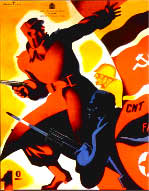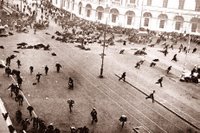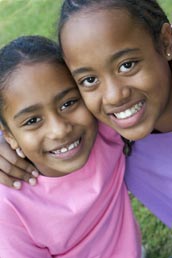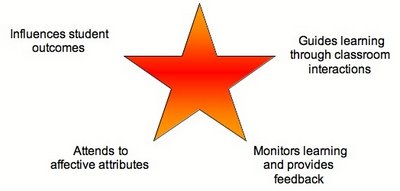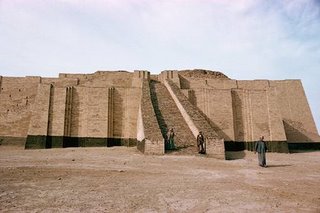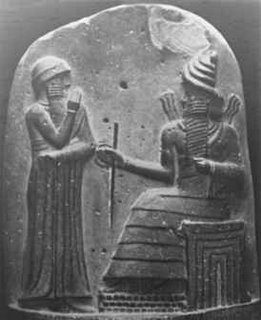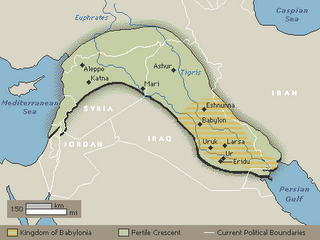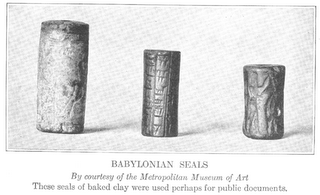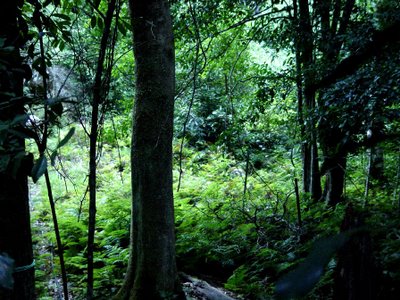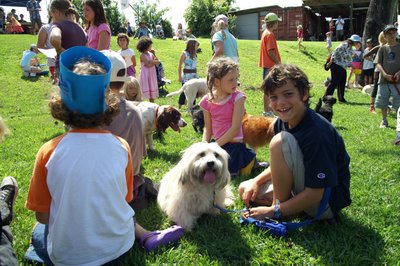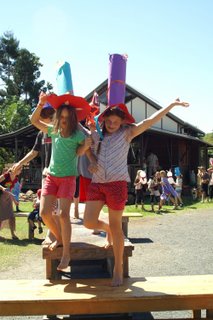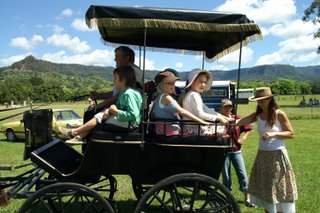Albert Einstein, 1948.
11.17.2006
"curiousity has its own reason for existance....never lose a holy curiousity."
Albert Einstein, 1948.
Albert Einstein, 1948.
Q3
Scope and Sequence
The scope and sequence of a Board of Studies document gives the teacher a curriculum plan for the overall range of a subject area that needs to be covered in a particular time frame at stage and yr level. The range of the subject includes the specific aspects of the subject that are assumed will be learnt in order to be ready to progress to the next level.
My overall evaluation of this material is that The Board of Studies is exercising much effort and good intention. The scope and sequence leaves room for teachers to design their own programs and can be applied to a variety of school learning environments. Somewhere in all the requirements and standards though, there needs to be an appreciation of the increasing demands on teachers’ time that this material requires to be conscientiously implemented. The stress that this work creates may lower the standard of actual delivery.
Teaching Programme/PREPARATION
This part of the BOS document would serve as a guide to the teacher with some suggested samples and activities relevant to the content to be covered in the scope and sequence.
The BOS examples help to formulate an overview of national learning standards.
To create a meaningful programme a teacher would need to:
research each individual student before beginning the course incorporating student feedback, discover motivators
adapt resources to design the programme to make it suitable to the peculiarities of an area’s local demographics and climate.
be innovative, create new resources!
where possible, incorporate an example of local indigenous culture and their contemporary issues
in Shearwater’s case work with collegial peers to incorporate anthroposophical content
from time to time during the learning sequence have a means to organise the class into smaller groups of 15 or less to optimise teaching
(Hattie’s research identifies that class sizes btw 20- 30 have no great impact on learning but groups of 15 or less achieve better results.)
have relevant excursions organised which suit content
facilitate when appropriate a closure occasion which is socially enjoyable and memorable
ASSESSMENT
Through my evaluation of the use of school level assessment program documents, within the repertoire of individual teaching strategies implemented to meet outcomes, the organisational requirements of The Board of Studies do need to be integrated. However there is a necessity to incorporate a form of equanimous feedback in the particular sense of
the following:
I think in our work as teachers we need to be open to the unknown and be able to step back after thoroughly teaching a topic to BOS requirements and see what else have our students learnt and refined in their personal values that was not indicated, assessed or referenced to a standard. This is where equanimity in feedback plays a vital role to the teacher, student and parent.
The scope and sequence of a Board of Studies document gives the teacher a curriculum plan for the overall range of a subject area that needs to be covered in a particular time frame at stage and yr level. The range of the subject includes the specific aspects of the subject that are assumed will be learnt in order to be ready to progress to the next level.
My overall evaluation of this material is that The Board of Studies is exercising much effort and good intention. The scope and sequence leaves room for teachers to design their own programs and can be applied to a variety of school learning environments. Somewhere in all the requirements and standards though, there needs to be an appreciation of the increasing demands on teachers’ time that this material requires to be conscientiously implemented. The stress that this work creates may lower the standard of actual delivery.
Teaching Programme/PREPARATION
This part of the BOS document would serve as a guide to the teacher with some suggested samples and activities relevant to the content to be covered in the scope and sequence.
The BOS examples help to formulate an overview of national learning standards.
To create a meaningful programme a teacher would need to:
research each individual student before beginning the course incorporating student feedback, discover motivators
adapt resources to design the programme to make it suitable to the peculiarities of an area’s local demographics and climate.
be innovative, create new resources!
where possible, incorporate an example of local indigenous culture and their contemporary issues
in Shearwater’s case work with collegial peers to incorporate anthroposophical content
from time to time during the learning sequence have a means to organise the class into smaller groups of 15 or less to optimise teaching
(Hattie’s research identifies that class sizes btw 20- 30 have no great impact on learning but groups of 15 or less achieve better results.)
have relevant excursions organised which suit content
facilitate when appropriate a closure occasion which is socially enjoyable and memorable
ASSESSMENT
Through my evaluation of the use of school level assessment program documents, within the repertoire of individual teaching strategies implemented to meet outcomes, the organisational requirements of The Board of Studies do need to be integrated. However there is a necessity to incorporate a form of equanimous feedback in the particular sense of
the following:
- - Time allocated for reporting and keeping records and observations is fair to each individual student.
- - Any documentation of feedback needs to be aesthetic and where possible incorporating technology in a creative way eg DVD, tapestry of visual and oral – maybe a simple keynote etc, open day presentations
- - The feedback be relative to each student’s individual progress taking into account their learning style, background and current issues
- - Snapshot feedback which puts the student’s work in the standards reference framework of state and national results,is not presumed absolute.
I think in our work as teachers we need to be open to the unknown and be able to step back after thoroughly teaching a topic to BOS requirements and see what else have our students learnt and refined in their personal values that was not indicated, assessed or referenced to a standard. This is where equanimity in feedback plays a vital role to the teacher, student and parent.
Chandra discovers relativistic pinball machine

This extraordinarily deep Chandra image shows Cassiopeia A (Cas A, for short), the youngest supernova remnant in the Milky Way. Credit: NASA/CXC/MIT/UMass Amherst/M.D.Stage et al.
CHANDRA X-RAY CENTER NEWS RELEASE
Posted: November 15, 2006
11.15.2006
Googling Constructivist Theory of Education 2006 got me to today. The top of the list was an abstract of a paper describing a 2hr workshop designed to introduce pre service teachers to digital video. The application of technology in every subject area is considered a requirement of education today. More is expected of the teacher than just traditional instructional skills; a creative capacity to facilitate the student’s ability to build their own knowledge is essential.
The culture of technology is global = the world wide web.
Describing how Piaget and Vygotskys’ theories compliment each other to provide the underpinning of Constructivist theory education requires a basic overview of who they were and how their culture and background influenced the way they constructed knowledge.
“In Piaget’s theory of cognition there are two levels of adaptation. On the practical level of survival, it is a matter of devising schemes of action that circumvent the obstacles and perturbations the environment places in the organism’s path. On the conceptual level of theories and explanations it is a matter of achieving a coherent balance that avoids internal contradictions.”
http://www.oikos.org/Piagethom.htm
Piaget studied his children in his home, one assumes a stable family environment. By contrast Vygotsky’s world was full of dramatic social change and upheaval.
The culture of technology is global = the world wide web.
Describing how Piaget and Vygotskys’ theories compliment each other to provide the underpinning of Constructivist theory education requires a basic overview of who they were and how their culture and background influenced the way they constructed knowledge.
“In Piaget’s theory of cognition there are two levels of adaptation. On the practical level of survival, it is a matter of devising schemes of action that circumvent the obstacles and perturbations the environment places in the organism’s path. On the conceptual level of theories and explanations it is a matter of achieving a coherent balance that avoids internal contradictions.”
http://www.oikos.org/Piagethom.htm
Piaget studied his children in his home, one assumes a stable family environment. By contrast Vygotsky’s world was full of dramatic social change and upheaval.
“Lev Vygotsky lived during the Russian Revolution, a time of great change in his culture. If Vygotsky’s assertion that biological and cognitive developmental do not occur in isolation, then his environment of change greatly influenced his own cognitive processes.”
http://www.psy.pdx.edu/PsiCafe/KeyTheorists/Vygotsky.htm
I perceive Vygotsky as a more subjective inter personal individual cited as “relying on the concept of social representation while Piaget’s more objective and intra personal means of research led him to regard social representations as ideological reflection.”
MOSCOVICI, Serge
WHO IS THE MOST MARXIST OF THE TWO?
Swiss Journal of Psychology 2/3, 1996, © Verlag Hans Huber AG, Bern
http://www.psy.pdx.edu/PsiCafe/KeyTheorists/Vygotsky.htm
I perceive Vygotsky as a more subjective inter personal individual cited as “relying on the concept of social representation while Piaget’s more objective and intra personal means of research led him to regard social representations as ideological reflection.”
MOSCOVICI, Serge
WHO IS THE MOST MARXIST OF THE TWO?
Swiss Journal of Psychology 2/3, 1996, © Verlag Hans Huber AG, Bern
Constructivist theory of education places much emphasis on social and interactive learning, where through collaboration multiple points of view are brought together thus more can be learnt through the focus of the group than just the individual.
I consider the use of computers to be a more isolated means of learning and not social and warm in a physical sense, though extremely interactive.
(see my previous blog)
Both the social skills of communicating and resolving conflict are necessary in virtual and physical environments. We need to understand our own learning mechanism. I like to talk to people and learn from their knowledge and experiences, the computer tends to put me into the too much information overload zone, I need peer support.
Without Vygotsky’s theory of the Zone of Proximal Development, not much can be achieved. However being in this zone for extended periods of time does seem to create anxiety especially if one is motivated by high achievement drivers. Vygotsky did live a much shorter life than Piaget.
There is something about the way Piaget steps back figuratively, detaching himself and seeing social representations as mere ideological reflection as somewhat impersonal. However there comes a time when asking and interrelating with others leads to too much information also and one has to decide for oneself what one thinks. That is important.
Personal and impersonal ways of making meaning and building knowledge are complimentary. Understanding our own process helps us to work more creatively with knowledge. Understanding how other people make meaning is vital if we are going to live in a tolerant and harmonious world.
Technology takes learning far beyond the linguistic (Vygotsky) and mathematical (Piaget) – it encourages so many more of the senses to be engaged – auditory and visual to name two. Constructivist Theory of Education is inseparable from the use of technology. How we use and apply technology to learn is supported by Vygotsky and Piagets complimentary ways of researching and making meaning.
I consider the use of computers to be a more isolated means of learning and not social and warm in a physical sense, though extremely interactive.
(see my previous blog)
Both the social skills of communicating and resolving conflict are necessary in virtual and physical environments. We need to understand our own learning mechanism. I like to talk to people and learn from their knowledge and experiences, the computer tends to put me into the too much information overload zone, I need peer support.
Without Vygotsky’s theory of the Zone of Proximal Development, not much can be achieved. However being in this zone for extended periods of time does seem to create anxiety especially if one is motivated by high achievement drivers. Vygotsky did live a much shorter life than Piaget.
There is something about the way Piaget steps back figuratively, detaching himself and seeing social representations as mere ideological reflection as somewhat impersonal. However there comes a time when asking and interrelating with others leads to too much information also and one has to decide for oneself what one thinks. That is important.
Personal and impersonal ways of making meaning and building knowledge are complimentary. Understanding our own process helps us to work more creatively with knowledge. Understanding how other people make meaning is vital if we are going to live in a tolerant and harmonious world.
Technology takes learning far beyond the linguistic (Vygotsky) and mathematical (Piaget) – it encourages so many more of the senses to be engaged – auditory and visual to name two. Constructivist Theory of Education is inseparable from the use of technology. How we use and apply technology to learn is supported by Vygotsky and Piagets complimentary ways of researching and making meaning.
11.11.2006
Q 1

QUALITIES I WOULD LIKE TO EMBODY AS A TEACHER:
this list is not in order of priority,
many of the qualities I have described are interdependant.
KNOW TEACHING AS A HEALING ART
/CORE VALUE
1.Expansion and contraction like the in and out breath is common to the individual and the whole organism like the seasons- the contraction, coldness and inwardness of winter and the expansion of Summer, warmth and longer brighter days – find ways to bring this rhythm into the lessons and plans of the day
2.Guide and teach with human warmth- the how
3.What I give to the group nourishes the group. Cultivate the ability to listen deeply.
4.Understand that the children will take what they need- secretion
5.Sustain and maintain the harmony and well being of the group. Once
the group is healthy/rhythmical, ie being constructive as a learning group not destructive, then no need to push.
6.Watch how the group grows, and watch how the individual grows and blossoms
7.Understand the truth of creativity – transformation and magic
These 7 points are adapted from Liz’s Tuesday morning lessons. Just reading these reflections brings an inner calm to myself see postings (further on in this blog)
BE RELAXED AND CONFIDENT/ ALLOW RECIPROCAL TEACHING (Vygotsky)
MONITORS LEARNING AND PROVIDES FEEDBACK –Hattie
I would like to have a developed sense of the overall picture in the classroom/learning environment with the capacity to prevent an unmanageable situation rather that be trying to stop it. Have the skill to learn from and integrate mistakes. Through assessment tasks help students and modify my own teaching process.
CREATE A RECEPTIVE SILENCE
INLUENCES STUDENT OUTCOMES - Hattie
Develop the skill of gaining the attention of the class and keeping it.
STIMULUS
Consider the many ways to ask questions, engage the student and lead them closer to outcomes (SPADY)(BLOOMS) and deep learning, making meaning.
-from conversations with Cory teacher from our school
Integrate Class Management based on Glasser model where the teacher is a friend and guide. ( Gabe has been mentor for me in developing my teaching ability.)
I would like to have different tools at my fingertips to stimulate the group; from Saturday's session with Allan
1. Novelty
2. Complexity
3. Ambiguity
4. Incongruity
KNOW MY SUBJECT INSIDE OUT KEEP UP TO DATE
FIND EFFECTIVE WAYS
TO ENHANCE LEARNING
WITH THE USE OF ICT
IDENTIFIES ESSENTIAL REPRESENTATIONS OF SUBJECT - Hattie
IDENTIFIES STUDENT’S OUTCOMES - Hattie
Teacher as learner/facilitator –Constructivist model
Social Learning theories and connectivism qualities of DLE
Develop Moral depth in students to facilitate healthy DLE
COMMAND RESPECT
ATTENDS TO AFFECTIVE ATTRIBUTES - Hattie
I would like to be a good listener both to the individual and to the organism of the class group as a whole. Listen to my own depth and insight through silence and meditation and finds ways to apply it.
Active listening - playground duty. When I am helping children resolve a dispute, a trusting relationship develops. Make the playground a safe place for play and socialising. It is my job as a teacher to respect what the child/student shares and treat their confidences with integrity.
Enriching spiritual practise.
CREATE LEARNING ENVIRONMENTS
THAT ARE RELAXING AND INSPIRING
REALITY BASED THERAPY AND CLASSROOM MEETING MODEL - Glasser
When I am well organised in a practical sense and lesson planning sense I feel more relaxed. I have confidence that I am well prepared – at present this works best for me when I am teaching practical art & craft lessons and swimming.
More recently with teenagers I have discovered they are happy in their special places in the school grounds, they like an element of relaxed informality, especially if you have the expertise on the subject but are very prepared to listen to their point of view – I would like to develop this capacity to find familiar conducive relaxing learning environments.
DEVELOP TEACHING PRACTISE – BE ADEPT AT GROUP WORK AND INNOVATIVE
USE INTERACTIVE TECHNIQUES
GUIDES LEARNING THROUGH CLASSROOM INTERACTIONS- Hattie
Vygotsky – social learning.
From conversations with an old teacher of mine with whom I am still friends.
When planning the lesson I would like to develop the skill of finding representations of the topic that are relevant to the age group and appropriate for the age group. This may include putting the subject into perspective and context – place in culture and history. Also bring current media scenarios that are relevant – popular culture..
Through providing deeper representations it is worth investigating the culture of the class, boy girl ratios, individual situations, relevant prior learning. (if not known)
Test their MI make-up.
From experiencing the value of the JIGSAW group work (http://www.jigsaw.org/steps.htm) we did on Saturday I am determined to integrate this into my teaching habits.
KNOW MYSELF BETTER
ATTENDING TO AFFECTIVE ATTRIBUTES – Hattie
Metacognitive theory deals with cognitive self-knowledge, that is, what individuals know about their own thinking (Kellogg, 1994).The emergence of metacognitive theory in the 1970's added to our understanding of complex cognitive phenomena by providing data on learners' awareness of and control over their cognitive activities (Devine, 1993). In 1979, John Flavell defined metacognition as knowledge which focuses on or regulates any part of cognitive activity, and he identified two general dimensions of metacognition: knowledge and experience. From “Reflection Matrix”
http://www.uwec.edu/grayca/webpgs2/reflection.htm
Through feedback from peers and students -assessment tasks. Understand that I will teach from my MI strengths and find ways to teach from other aspects of myself.
From brief conversation with Cory experienced teacher at our School
FACILITATE DEEP LEARNING
INFLUENCE STUDENT OUTCOMES - Hattie
Through well designed questions – refer to BLOOMS TAXONOMY and use of scaffolding encourage students into and through their ZPD (Vygotsky)
BENEFIT FROM DIVERSITY OF OUR COLLEGE OF TEACHERS
Collaboration and learning from differences continuing education.
I think Konrad is very skilled at employing, he recognises people’s gifts and capacity. He finds ways to combine teachers who have different teaching styles, years of experience and types of training- for example a young recently graduated English/Drama teacher(no children) is combining with a very experienced Steiner-based teacher (mother of 5) as co-class guardians for new high school group.
CULTIVATE INCLUSIVE SKILLS
Forming a teaching practise that is inclusive is important to me. Because I teach swimming from kindergarten age to Year 8 there is a huge demand on my capacity for recall – I take the roll, I make summaries after teaching each class, in consultation with their teacher. With swimming one tends to notice the weak/non swimmers because of safety issues, and the very strong swimmers. To get a picture for each individual is hard work when attending to approximately 260 different children over many classes each week – remembering the names of the younger ones is challenging.
Cumulative assessment through daily records and observation
TO SAY NO WHEN OVERLOAD IS CREATING DYSFUNCTIONAL TEACHING.
RE: posting on previous blog about sensory overload and undigested information, including a description of a daily ritual - a reflective practise recommended by Steiner.
This brings me to reflecting the dangers of work related stress – overload can impede even the most expert teacher’s function and decision making capacity, without quiet time for critical reflection and spiritual work the children may suffer.
KEEP INFORMED, CONNECT WITH OTHER LEARNING COMMUNITIES
STAY WITH THE BIGGER PICTURE
BE AWARE OF PAROCHIAL TENDENCIES
Parents, local community, Australia and the Globe – Connectivism.
Catch into the Sustainability Movement = social + ecological – how to live it and teach it creatively. Walk my talk.
SUSTAINABILITY EDUCATION
"There is a vitality, a life-force, an energy, a quickening that is translated through you into action. And because there is only one of you in all of time, this expression is unique. And if you block it, it will never exist through any other medium and be lost.!" – Martha Graham
“WE NEED TO SHIFT OUR WORLD VIEW” – Margaret Wheatley
CHANGE THE PARADIGM/ACTION RESEARCH
If I can change my paradigm then I can help students overcome patterns and emotions (personal belief systems) that no longer serve the individual or greater good. That falls into emotional intelligence ……… making way for improved learning ability.
TAKE RISKS BE COURAGEOUS & ENTREPRENEURIAL
Look after my homebase and relationships with good friends and family, so that risk taking is possible. Be secure in community.
Insight from Allan’s lecture.s
PS. SENSE OF HUMOUR, ENJOY TEACHING AND LEARNING!
Smile, remember to keep a lightness of being so change and re invention of the self and reformatting of the self is easy. ‘To be an expert teacher.’
11.06.2006
10.29.2006
BRONZE MEDALLION INITIATIVE
YEAR 8 microlesson
I have known most of these kids since they were in class 2.
Task: to create a situation whereby learning for the Bronze Medallion
is not just a rote experience but something they will remember.
There is no REAL way to assess how much students have learnt for this
well-respected and traditionl world wide recognised award UNLESS
THE CHILDREN ARE IN A TRUE EMERGENCY - BECAUSE IT IS
THEN AND ONLY THEN A REAL RESPONSE CAN BE GUAGED.
When confronted with the prescription that self preservation is a priority
one girl was very dismayed, in fact horrified. She has a very noble disposition
and the idea of 'not' risking her life to save a person shocking.
AFTER LEARNING MANY LIFESAVING SKILLS, WATER SAFETY GUIDELINES AND INCREASING FITNESS, THE INDIVIDUAL IS PRESENTED WITH A SIMULATED EMERGENCY SCENARIO AT THE POOL
THE QUALITY OF THOUGHT REQUIRED TO ASSESS THE EMERGENCY AND TAKE ACTION IS WHAT
IS TO BE ASSESSED.
By taking this lesson into a classroom I compounded the task. Very hard to make it representational. Furthermore, to encourage higher order thinking I wanted the individual to take the place of the teacher and create an initiative test, that is, imagine an emergency- which we can use at the pool to test a fellow class mate.
What would be the clearest way of explaining this to the group?
I have known most of these kids since they were in class 2.
Task: to create a situation whereby learning for the Bronze Medallion
is not just a rote experience but something they will remember.
There is no REAL way to assess how much students have learnt for this
well-respected and traditionl world wide recognised award UNLESS
THE CHILDREN ARE IN A TRUE EMERGENCY - BECAUSE IT IS
THEN AND ONLY THEN A REAL RESPONSE CAN BE GUAGED.
When confronted with the prescription that self preservation is a priority
one girl was very dismayed, in fact horrified. She has a very noble disposition
and the idea of 'not' risking her life to save a person shocking.
AFTER LEARNING MANY LIFESAVING SKILLS, WATER SAFETY GUIDELINES AND INCREASING FITNESS, THE INDIVIDUAL IS PRESENTED WITH A SIMULATED EMERGENCY SCENARIO AT THE POOL
THE QUALITY OF THOUGHT REQUIRED TO ASSESS THE EMERGENCY AND TAKE ACTION IS WHAT
IS TO BE ASSESSED.
By taking this lesson into a classroom I compounded the task. Very hard to make it representational. Furthermore, to encourage higher order thinking I wanted the individual to take the place of the teacher and create an initiative test, that is, imagine an emergency- which we can use at the pool to test a fellow class mate.
What would be the clearest way of explaining this to the group?
10.07.2006
INTERACTIVE YR8 - TERM 4 CHALLENGES
A Link to Hattie
Receiving feedback that my style of classroom management is very laissez - faire is somewhat disconcerting, because in my core being, I do not want to cultivate anti-social behaviour in the students through allowing them to be flippant, disrespectful and disruptive.
Other teachers say it is crazy to have Year 8s without two teachers. Some of the yr 8s love to make a big noise and be extremely playful.
Their classroom has a low ceiling, flourescent lights and four pillars that inadvertantly create a four-sided central space, there are air conditioners which work best if you stand right in front of them.
For whatever style of teaching, without excellent classroom management skills, for the class understanding and learning is greatly diminished. Though for my microlesson each group did think about the problem and discuss it - my intention was also to create learning between groups.

RE : MICROLESSON
Receiving feedback that my style of classroom management is very laissez - faire is somewhat disconcerting, because in my core being, I do not want to cultivate anti-social behaviour in the students through allowing them to be flippant, disrespectful and disruptive.
Other teachers say it is crazy to have Year 8s without two teachers. Some of the yr 8s love to make a big noise and be extremely playful.
Their classroom has a low ceiling, flourescent lights and four pillars that inadvertantly create a four-sided central space, there are air conditioners which work best if you stand right in front of them.
For whatever style of teaching, without excellent classroom management skills, for the class understanding and learning is greatly diminished. Though for my microlesson each group did think about the problem and discuss it - my intention was also to create learning between groups.

RE : MICROLESSON
In an attempt to create a representation for this age group, to which they could relate, inadvertantly I encouraged an excuse for wild behaviour, by giving a group of girls the example of someone unconscious on the bottom of a swimming pool at a party. The girls all started dancing around pretending to be drunk, then falling onto the floor, where the swimming pool was supposed to be - the group of boys solving the initiative really did'nt have a clue what was gong on and started throwing bouyant rescue aids at the girls - I then had to explain that they were unconscious - the situation went from silly to sillier.
PRIOR LEARNING/CONTINUITY = POOL WORK+GIRLS 4 A class +MICROLESSON + LESSON PLAN
If I had the group on a regular basis, with assistance maintaining attention I could build on this chaotic situation and ask, well How would you assist this unconscious person on the bottom of the swimming pool and what would be the appropriate aftercare? (now that we have done a session on first aid relevant to near drowning AFTERCARE NB lesson plan ) - I would be looking for a variety of answers including reference to the risk of secondary drowning.
Then hopefully we could explore the subject of risk taking and how would you feel if a close freind died at a party and no one recognised the situation when the death could have been prevented?
When I worked with the Yr 8 girls(prior to microlesson) on the issues around being a teenager, with specific guidance to anecdotes about water and near drowning personal experiences; we did arrive at a contemplative place. It was after a recent car crash involving the death of 4 teen age boys. A quality of sobriety pervaded the group and this is what I aim for with issues of life and death.
I ran this group with the girls outside under the shade of some trees where they like to congregate(special place - creative class room)- though the setting was informal and laissez fare - in that we were on the ground and the girls were lying on each other, I was able to bring the focus back to the issues easily and keep their attention with interesting anecdotes and other water related subjects like water birth, aqua sports, pool parties etc. I felt relaxed too which improved my timing and delivery and ability to move with the flow discussing issues which I knew about well.(expert on subject)
I felt satisfied that I had reached the group. We also did a playful chant in a circle at the end; going through the 4 A's AWARENESS ASSESSSMENT ACTION AFTERCARE with 17 in the circle.
With regard to the mixed sex microlesson on initiatives and more recently the mixed sex class on AFTERCARE (re submitted lesson plan) I am not so confident I have reached the whole group. The group work needed to be modified and more experience will assist this.(JIGSAW technique)
We will be doing pool work in Week 8 to complete the Bronze practical tasks and prior to that 2 CPR sessions - where I will have boys and girls seperately.
INCLUSIVITY is a problem now as a percentage of the class have opted to do the Bronze work next year because of wearables, illness and lack of fitness. I need to discuss the situation with their class guardian.
Please see the link to ACTION RESEARCH from my previous blog.
In there I have described the possibility of filming the initiatives - I have yet to discuss this possibility with Eliot.
INCLUSIVENESS & ASSESSMENT - HATTIE feedback - DLE ICT & creativity
By filming and recording their test work at the pool(using some props) and responses to questions designed to illustrate the quality of thought for the choices made in simulated rescues. This documentation could then be shown to the whole class to assess (using a simple rubric) and discuss, pending availability of time and resources.
PRIOR LEARNING/CONTINUITY = POOL WORK+GIRLS 4 A class +MICROLESSON + LESSON PLAN
If I had the group on a regular basis, with assistance maintaining attention I could build on this chaotic situation and ask, well How would you assist this unconscious person on the bottom of the swimming pool and what would be the appropriate aftercare? (now that we have done a session on first aid relevant to near drowning AFTERCARE NB lesson plan ) - I would be looking for a variety of answers including reference to the risk of secondary drowning.
Then hopefully we could explore the subject of risk taking and how would you feel if a close freind died at a party and no one recognised the situation when the death could have been prevented?
When I worked with the Yr 8 girls(prior to microlesson) on the issues around being a teenager, with specific guidance to anecdotes about water and near drowning personal experiences; we did arrive at a contemplative place. It was after a recent car crash involving the death of 4 teen age boys. A quality of sobriety pervaded the group and this is what I aim for with issues of life and death.
I ran this group with the girls outside under the shade of some trees where they like to congregate(special place - creative class room)- though the setting was informal and laissez fare - in that we were on the ground and the girls were lying on each other, I was able to bring the focus back to the issues easily and keep their attention with interesting anecdotes and other water related subjects like water birth, aqua sports, pool parties etc. I felt relaxed too which improved my timing and delivery and ability to move with the flow discussing issues which I knew about well.(expert on subject)
I felt satisfied that I had reached the group. We also did a playful chant in a circle at the end; going through the 4 A's AWARENESS ASSESSSMENT ACTION AFTERCARE with 17 in the circle.
With regard to the mixed sex microlesson on initiatives and more recently the mixed sex class on AFTERCARE (re submitted lesson plan) I am not so confident I have reached the whole group. The group work needed to be modified and more experience will assist this.(JIGSAW technique)
We will be doing pool work in Week 8 to complete the Bronze practical tasks and prior to that 2 CPR sessions - where I will have boys and girls seperately.
INCLUSIVITY is a problem now as a percentage of the class have opted to do the Bronze work next year because of wearables, illness and lack of fitness. I need to discuss the situation with their class guardian.
Please see the link to ACTION RESEARCH from my previous blog.
In there I have described the possibility of filming the initiatives - I have yet to discuss this possibility with Eliot.
INCLUSIVENESS & ASSESSMENT - HATTIE feedback - DLE ICT & creativity
By filming and recording their test work at the pool(using some props) and responses to questions designed to illustrate the quality of thought for the choices made in simulated rescues. This documentation could then be shown to the whole class to assess (using a simple rubric) and discuss, pending availability of time and resources.
REFLECTION-ANECDOTAL
When I went to State School, some 40 years ago, I remember one teacher in particular, I had her for 2 years in a row.
She would put the day's work on the blackboard, text books page numbers, SRC notes, maths text book page numbers etc. Then after news or whatever she would direct us to the mornings work and allow us to do it in any order. The resources were at various stations around the classroom. We loved going about the work how we wanted to, I remember a certain sense of power and freedom.
The same teacher would describe her ideas for a different classroom layout, without desks but with benches, she told us her husband was a carpenter. She liked the idea of benches being around the edges of the room. She had some different ideas about teaching, she was young and enthusiastic and idealistic. I remember doing art with her and embroidery, she was alway patient and kind.
She would put the day's work on the blackboard, text books page numbers, SRC notes, maths text book page numbers etc. Then after news or whatever she would direct us to the mornings work and allow us to do it in any order. The resources were at various stations around the classroom. We loved going about the work how we wanted to, I remember a certain sense of power and freedom.
The same teacher would describe her ideas for a different classroom layout, without desks but with benches, she told us her husband was a carpenter. She liked the idea of benches being around the edges of the room. She had some different ideas about teaching, she was young and enthusiastic and idealistic. I remember doing art with her and embroidery, she was alway patient and kind.
MULTIPLICITY
before I get too far into personal reflections I am still intent on discoveries: for example with regard to the shift from describing economy in terms of knowledge -Currency (accurate, up-to-date knowledge) from: principles of connectivism, to describing economy in terms of creativity.
and with regard to creativity as always artists are at the forefront of philosophical dialogue taking terminology like 'collaboration'(space of negotiation of individual differences) and 'globalisation' into the arena of discussion and exploration which is not biased by materialistic priorities
for example research into the proliferation of controversial boundaries in the contemporary world as exposited by the ::MULTIPLICITY:: network " Borders: the other side of globalisation. One of the immediate results of global interconnections and movements appears to be the proliferation of borders, security systems, and check points, physical and virtual frontiers. This phenomenon can be observed both at the micro-level of our surroundings and the macro-level of global flows " visit this network's site and read on
concern about international student flows - ie the US losing its talent and not attracting overseas students or immigrants in the context of National Political Shortcomings - if you have the time watch this video of a Mayoral Conference in America April 12 2005, which features Richard Florida the day his book 'The Flight of the Creative Class' was launched. The three Ts are discussed in the framework of the global competition for talent -the three Ts being TALENT, TOLERANCE & TECHNOLOGY
another view worthy of contemplation is Simon Sheikh's essay REPRESENTATION, CONTESTATION AND POWER: THE ARTIST AS A PUBLIC INTELLECTUAL - consider -
'the public' is no longer the public but 'the market'
and with regard to creativity as always artists are at the forefront of philosophical dialogue taking terminology like 'collaboration'(space of negotiation of individual differences) and 'globalisation' into the arena of discussion and exploration which is not biased by materialistic priorities
for example research into the proliferation of controversial boundaries in the contemporary world as exposited by the ::MULTIPLICITY:: network " Borders: the other side of globalisation. One of the immediate results of global interconnections and movements appears to be the proliferation of borders, security systems, and check points, physical and virtual frontiers. This phenomenon can be observed both at the micro-level of our surroundings and the macro-level of global flows " visit this network's site and read on
concern about international student flows - ie the US losing its talent and not attracting overseas students or immigrants in the context of National Political Shortcomings - if you have the time watch this video of a Mayoral Conference in America April 12 2005, which features Richard Florida the day his book 'The Flight of the Creative Class' was launched. The three Ts are discussed in the framework of the global competition for talent -the three Ts being TALENT, TOLERANCE & TECHNOLOGY
another view worthy of contemplation is Simon Sheikh's essay REPRESENTATION, CONTESTATION AND POWER: THE ARTIST AS A PUBLIC INTELLECTUAL - consider -
'the public' is no longer the public but 'the market'
SPEECH
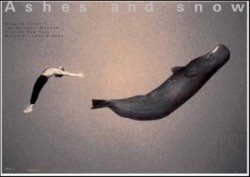 exhibition by Gregory Colbert
exhibition by Gregory Colbert 

"The whales sing not because they have an answer."
"The whales sing because they have a song."
written by Gregory Colbert
Colbert -- who doesn't wear a watch, carry a cell phone, or use the Internet -- said he captures his subjects in such phenomenal poses after spending enough time in a location for the animals to get used to him.
"I'm usually just spending a lot of time with them, interacting, observing, reassuring," he said, adding that in today's technologically advanced society, there are few people who have developed a once-normal framework for relating to animals in the wild.
EXTRACT from CTV.ca NEWS STAFF Jan 25, 2006.
'Canadian artisit sees through unique lens'
C6 MOSAIC BIRDBATH-Term 3, 2006
CONTENT FOCUS
To create a mosaic birdbath informed by the culture and technique of Ancient Rome, with open discussion on the topic. Working in a focussed way with dextrous application of the medium. Translating a drawing into a mosaic, considering appropriate elements of design for example the border, composition, color harmonies and complimentary balance, also refering to prior learning of shape relating to the elements; fire, air, water and earth.
SKILLS
- students will design within given parameters (Ancient Rome subject and method)
- draftsmanship
- translate design into glass pieces
- cut glass with a variety of tools
- develop dexterity with hands, fine motor skills
- learn to grout
- students will value and appreciate the opportunity to engage in Visual Arts through learning and experience in making
- appreciate the role of artist as archivist of his epoch
- note how art forms employ a wide range of traditional and contemporary technology
- learn how to pay attention to detail
- experience a variety of textures; hardness of glass, cake-mix feeling of grout
- appreciate opacity and translucency; through a variety of stained glass
- understand the need to persist and utilise patience
- assist fellow class mates where skill levels vary therefore developing acceptance of each other's work
- sense of accomplishment/achievement
- research roman mosaics internet, print images
- collect a range of relevant books
- source best price materials
- purchase terracotta dishes, round and square
- consult professional mosaic artist
- bring in completed example of a mosaic birdbath
Assess how the student works with peers, artwork in progress, problem solving skills and finished pieces of work. How each student learns and applies new techniques, and works with tools. Student's originality and exploration of different techniques, designs and execution of intention.
USE OF FEEDBACK TO THE CREATIVE HEART - PERSONAL REFLECTION

Working with 33x11/12 year olds and their class teacher to make mosaic birdbaths.
The beauty of our school's structure, dividing the day into three parts -
thinking, feeling, willing and having the same class teacher for 7 years promotes a harmonious social climate in the classroom of trust and co operation. This particular class have a male teacher who is an exceptional artist, hence a large majority of the class have excellent drafting and design skills. Presenting mosaic to a group with a strong foundation of artistic practise, that is recognisable prior learning, makes my task much easier.
The whole group reached a very high standard of work.
The pitfalls for me came at the grouting process as I have very limited experience at grouting, and although I could work one on one successfully, when they were all going for it, there were some grout cleaning up situations that left much to be desired- (I needed tomuse hyrdochloric acid at a later date to potentialise the final work of art)
Retrospectively I could have given clearer instructions about grouting and sought assistance from one of the other teachers at the school at this stage of their mosaic process.
Working with a large group had other pitfalls in that some students experience learning difficulties and needed more intense attention.
I worked hard to reach each person in the group over the three weeks and highlight a strong aspect of their work, their choice of colour, subject, attention to detail, beauty of design etc. I work to find something positive to say about each piece. Where I have difficulty is in my desire to reach perfection and at times imposing my standard onto them, I do not know at what point to draw the line with regard to their finished work - I think I can be a little hard and critical. I see it in their faces and if I push too hard for quality they will give up rather than strive further. Children are very sensitive.
I would like each of them to have a sense of accomplishment and pride in their work. If I sense I have made the students feel disheartened I do my best to rectify this over the days of the block lesson, even a comment in passsing once the lesson is complete.
When I studied printmaking at artschool I was very fortunate to have a gifted and inspired teacher - she was young and had come to our school at the last minute as another teacher had left the post.
Over time, at critique sessions, I noticed she had a certain style of teaching, she listened very carefully when each of us talked about our work, what we were trying to convey and the techniques we were using. She would then sincerely compliment and or make a positive constructive comment about an aspect of our work. Then if necesssary, very gently she would point to an area and suggest a way to improve the image, method and or whatever was relevant. I received her feedback with openness because I was feeling good about my work from her initial comments.
I became very enthusiastic about improving the image, trying out her ideas and discovering more of my own. For some it is a huge step to actually like one's work - and as a teacher to find a way to honestly feedback critique to student is a skill and it is a skill to be heard . If trust exists between the teacher and student, a trust that the teacher is speaking the truth and not just being positive for its own sake then much can be accomplished. I am always working on developing the skill of finding positive and constructive feedback for the student. I am dissappointed when a student is not happy with work that they have done well. Not with the student but I experience a certain sadness that the student can not perceive their own strength.
I think that later in the year when students see their work displayed for open day and hear the comments and enthusiasm of others for their work that they can step back with more objectivity and see their achievement.
CREATIVITY ?
Sit down, shut up and be creative!
(follow this link to full article)
Sometimes the biggest obstacle to creativity in
the classroom is the person at the front of it. “The
problem with teachers, ” says Dennis Sherwood,
“is that they tend to hold their own intellect in
high esteem. So they can have a rather arrogant
approach, where they see it as their job to impart
knowledge to their pupils, which can stifle
creativity.”
Teaching creatively and teaching in a way that
encourages creativity are two different things.
It’s possible to design an ingenious lesson on
Tudor history, only to deliver it in a instructional
way. The expectations teachers have in terms of
pupil behaviour can also act as an obstacle to
promoting creative thought. Research shows, for
example, that children labelled “creative” have a
higher than average chance of getting into
trouble with their teachers. “Surveys show that in
theory teachers overwhelmingly support
creativity as something to be encouraged , ”says
Professor Arthur J Crople , author of Creativity in
Education and Learning. “However, in practice
They often frown upon some of the traits
associated with creativity.
These two paragraphs are from a long article written by Steven Hastings, which discusses ways to enhance creativity in schools in all subjects, giving examples of new trends in English schools and suggesting ideas like "throw away the national curriculum". How long will it be before educationalists in Australia will be making the same command?
Hastings, Steven: CREATIVITY, Feb 2004 TES Friday Magazine
(follow this link to full article)
Sometimes the biggest obstacle to creativity in
the classroom is the person at the front of it. “The
problem with teachers, ” says Dennis Sherwood,
“is that they tend to hold their own intellect in
high esteem. So they can have a rather arrogant
approach, where they see it as their job to impart
knowledge to their pupils, which can stifle
creativity.”
Teaching creatively and teaching in a way that
encourages creativity are two different things.
It’s possible to design an ingenious lesson on
Tudor history, only to deliver it in a instructional
way. The expectations teachers have in terms of
pupil behaviour can also act as an obstacle to
promoting creative thought. Research shows, for
example, that children labelled “creative” have a
higher than average chance of getting into
trouble with their teachers. “Surveys show that in
theory teachers overwhelmingly support
creativity as something to be encouraged , ”says
Professor Arthur J Crople , author of Creativity in
Education and Learning. “However, in practice
They often frown upon some of the traits
associated with creativity.
These two paragraphs are from a long article written by Steven Hastings, which discusses ways to enhance creativity in schools in all subjects, giving examples of new trends in English schools and suggesting ideas like "throw away the national curriculum". How long will it be before educationalists in Australia will be making the same command?
Hastings, Steven: CREATIVITY, Feb 2004 TES Friday Magazine
VISIBILITY
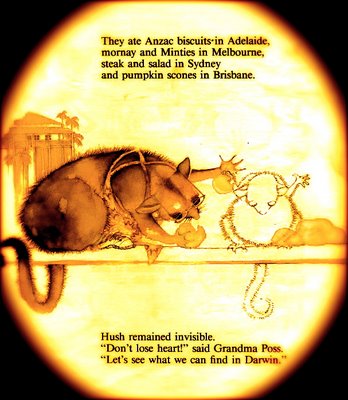
from POSSUM MAGIC written by Mem Fox and illustrated by Julie Vivas. Pub March 1983
Reaching each individual in a classroom setting is not always possible, sometimes the greatest change in a student is the consequence or outcome of Adventure Education.
Here is a link to a trip made to Darwin last year by our then Year 9,
and another link to Hattie who has written a paper titled
"Out of Class Experiences that make a Lasting Difference"
I include these hyperlinks purely as examples of innovative methods of creating learning for students who may otherwise be unteachable.
COOKING C5
ANZAC BISCUITS
To begin this series of cooking classes, I was assigned to teach with class 5 we cooked Anzac biscuits. Dina the class 5 teacher had requested that we cook cakes and biscuits.
This posed a dilemma for me, because although I am passionate about cooking I am not especially passionate about cakes and biscuits. Viewing the whole habit of nibbling on food, that is largely wheat and dairy based to be somewhat of an exercise in adding on masses of unnecessary body weight for those of us in the mid-life category. Swallowing my position on the ingredients necessary for cake and biscuit cooking classes I went ahead and planned a series of classes for these 10/11 year olds. Basing my choices on their requests and past memorable times of enjoying sweet fare when bulging buttocks were not an issue.
I introduced the class by explaining that we would be making Anzacs as a warm up exercise to see how they went with listening, cooking and cleaning up. There were 15 students in a group dividing into 3 small groups for the three work benches in our school’s kitchen. (OH&S)
Cooking classes have a bit of a reputation for being loud and out of control with mixed sex groups. Though generally the children love cooking! They just do, they love it, (and also this class 5 group love eating)– somehow it empowers them – I know when my daughter cooks at home she feels an opportunity to express herself in the kitchen which is an area in which I am very dominant. It gives her the importance of being the provider of nurturing and nutrients.
Aside I think there is a whole discussion area to be explored on constructivism in the home but let us leave that for another time do check out… EXAMBLOG
To make the situation interesting I offered three different varieties of Anzacs
Muesli Anzacs (muesli substitutes oats)
Traditional Anzacs
Spicy Spelt (here was an opportunity for me to have input in that I love to cook with cinnamon, nutmeg, orange zest etc. and replacing wheat with spelt)
It was a fairly constructivist environment in that the children worked in groups, the recipes were written up on the blackboard, for them to follow. The scaffolding was the recipes, the work areas, the cooking utensils, the ingredients – the rest was up to them – my assistant and I supervised the gas cooking for melting butter and the oven work to avoid injury, and watched that behaviour did not become out of control in a way that would be dangerous to the children.
All went well and we completed with three different tasting types of Anzacs (multiple representations)– I wanted them all to try each variety – which was a challenge as typically the children want to eat exactly what they have made – right from kindergarten days when each bun or biscuit etc. is labelled as it goes into the oven – I always try to bring some type of sharing scenario; in this case asking them to try each type.
In middle lessons Jacinta, a high school cooking teacher, does a process with Yr 7 cooking classes by cooking miles more than enough for the class and actually cooking meals that are distributed around the school for staff at lunchtime. This creates a wonderful feeling of abundance and generosity – much satisfaction in the belly.
With an afternoon lesson we have to work toward home time.
To finish off the lesson I did a survey asking who liked which variety of anzacs the most – from both groups the majority, by far, voted for TRADITIONAL.
And some brainstorming about what they wanted to cook next, they came up with:
Chocolate-coated strawberries
Ice cream
Cheese cake
Triple chocolate brownies
Gingerbread men
Shortbread
Pizzas
Milkshakes
Over 3 weeks I had the benefit of doing a number of recipes twice thus having an immediate opportunity to improve on the organization. The make-up of each group was different each time as well, due to some children participating in a drumming group on the Tuesday.
To begin this series of cooking classes, I was assigned to teach with class 5 we cooked Anzac biscuits. Dina the class 5 teacher had requested that we cook cakes and biscuits.
This posed a dilemma for me, because although I am passionate about cooking I am not especially passionate about cakes and biscuits. Viewing the whole habit of nibbling on food, that is largely wheat and dairy based to be somewhat of an exercise in adding on masses of unnecessary body weight for those of us in the mid-life category. Swallowing my position on the ingredients necessary for cake and biscuit cooking classes I went ahead and planned a series of classes for these 10/11 year olds. Basing my choices on their requests and past memorable times of enjoying sweet fare when bulging buttocks were not an issue.
I introduced the class by explaining that we would be making Anzacs as a warm up exercise to see how they went with listening, cooking and cleaning up. There were 15 students in a group dividing into 3 small groups for the three work benches in our school’s kitchen. (OH&S)
Cooking classes have a bit of a reputation for being loud and out of control with mixed sex groups. Though generally the children love cooking! They just do, they love it, (and also this class 5 group love eating)– somehow it empowers them – I know when my daughter cooks at home she feels an opportunity to express herself in the kitchen which is an area in which I am very dominant. It gives her the importance of being the provider of nurturing and nutrients.
Aside I think there is a whole discussion area to be explored on constructivism in the home but let us leave that for another time do check out… EXAMBLOG
To make the situation interesting I offered three different varieties of Anzacs
Muesli Anzacs (muesli substitutes oats)
Traditional Anzacs
Spicy Spelt (here was an opportunity for me to have input in that I love to cook with cinnamon, nutmeg, orange zest etc. and replacing wheat with spelt)
It was a fairly constructivist environment in that the children worked in groups, the recipes were written up on the blackboard, for them to follow. The scaffolding was the recipes, the work areas, the cooking utensils, the ingredients – the rest was up to them – my assistant and I supervised the gas cooking for melting butter and the oven work to avoid injury, and watched that behaviour did not become out of control in a way that would be dangerous to the children.
All went well and we completed with three different tasting types of Anzacs (multiple representations)– I wanted them all to try each variety – which was a challenge as typically the children want to eat exactly what they have made – right from kindergarten days when each bun or biscuit etc. is labelled as it goes into the oven – I always try to bring some type of sharing scenario; in this case asking them to try each type.
In middle lessons Jacinta, a high school cooking teacher, does a process with Yr 7 cooking classes by cooking miles more than enough for the class and actually cooking meals that are distributed around the school for staff at lunchtime. This creates a wonderful feeling of abundance and generosity – much satisfaction in the belly.
With an afternoon lesson we have to work toward home time.
To finish off the lesson I did a survey asking who liked which variety of anzacs the most – from both groups the majority, by far, voted for TRADITIONAL.
And some brainstorming about what they wanted to cook next, they came up with:
Chocolate-coated strawberries
Ice cream
Cheese cake
Triple chocolate brownies
Gingerbread men
Shortbread
Pizzas
Milkshakes
Over 3 weeks I had the benefit of doing a number of recipes twice thus having an immediate opportunity to improve on the organization. The make-up of each group was different each time as well, due to some children participating in a drumming group on the Tuesday.
THE PROOF IS IN THE PUDDING
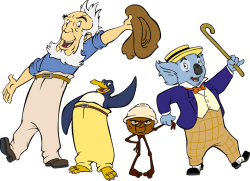
What I found most interesting over the three weeks of changing groups and changing dynamics depending on who was in which group, whether there was flirtatious interaction happening, some students brought great concentration and sincerity to the kitchen others came with a mischievious glint in their eye, was that
the days where the whole class cooked exactly the same thing with the same ingredients, with no gluten free or spice variations etc., were the days that were most successful. For example the gingerbread man days meant they all started with the same basic mixture they all had the same range of ingredients to chose from to decorate their gingerbread man though at this point their pieces varied with what they decorated their gingerbread man, the shapes varied etc.
When we cooked pizza the dough we made was the same for everyone – how thin they rolled it, what shape their pizza was and what combination they could make for the top of their pizza varied - they got to experiment with different cheeses, salami, ham or tempeh – tomato etc.
At the end of this style of class- the gingerbread and pizza style, each student ended up with what they had made for themselves their individual version of the same thing so to speak.
On these days they were most satisfied, munching away outside looking at each others creations, trying a little of each others, some had made extra for a staff or family member.
I learnt from their comments and feedback.
CLEAN UP - REFLECTION
I tried to introduce a situation with the cleaning-up where some of the students could learn to delegate or supervise the cleaning up, but I needed to formulate this with more clarity in the beginning and create a situation whereby each small group nominated a quality control person. Cleaning up has the potential to be very rewarding, but too often it appears as a chore or a punishment like picking up rubbish around the school. One of my long-term goals as a teacher is to inspire a sense of pride and well being in the kids: for their school, equipment, classrooms etc. A greater sense of reverence for what they have - and the satisfaction gained from doing a good clean up. Here positive reinforcement is so vital giving the children a sense of esteem.
They already have a great sense of place and ownership for their school with the development of gardens and the building of new play areas each year. They love the creek that borders the school property and will play games like soccer for an eternity of time. They have favourite trees to visit and shade places to congregate. Our school pig 'Conchenielle' is almot a mascot. All these elements add to the children's joy and happiness to be at school.
Being one step ahead of the group congratulating the children who take initiative is vital.
I need to acknowledge initiative very articulately. There is a fine dance between getting very bossy and representing a nagging authority figure to being a person who is loved and respected by facilitating a sense of “well done”. This comes across in how I speak and in the example I set. Who do I represent?
Next time I teach cooking I would facilitate more discussion between the children about the practicalities of clean cooking equipment, being able to find what is needed because it is in its labelled place etc.
How does one highlight the attitude that cleaners are for cleaning up or your being paid you do it – that this kind of attitude is arrogance and that it has long term ramifications in how the children treat people in their world – how they learn to look after themselves, their environment and their possessions?
The film “Blue Crush” has a brilliant scene where the lead surfing characters, 3 girls, are cleaning up a room in a very upmarket hotel in Hawaii and have to clean-up vomit, used condoms and a very messy space left by some famous football players. (Richard Florida has some great stuff to say about 'the service industry' see MULTIPLICITY post)
I would like to find a way to create inquiry, a questioning about the role we take in life even at a very mundane level, but somehow I think the timing is critical. How cerebral can this process be for 10/11 year olds – the attitude from home makes a huge difference especially in such a familiar setting as the kitchen and “Blue Crush” is not appropriate for their age group.
They already have a great sense of place and ownership for their school with the development of gardens and the building of new play areas each year. They love the creek that borders the school property and will play games like soccer for an eternity of time. They have favourite trees to visit and shade places to congregate. Our school pig 'Conchenielle' is almot a mascot. All these elements add to the children's joy and happiness to be at school.
Being one step ahead of the group congratulating the children who take initiative is vital.
I need to acknowledge initiative very articulately. There is a fine dance between getting very bossy and representing a nagging authority figure to being a person who is loved and respected by facilitating a sense of “well done”. This comes across in how I speak and in the example I set. Who do I represent?
Next time I teach cooking I would facilitate more discussion between the children about the practicalities of clean cooking equipment, being able to find what is needed because it is in its labelled place etc.
How does one highlight the attitude that cleaners are for cleaning up or your being paid you do it – that this kind of attitude is arrogance and that it has long term ramifications in how the children treat people in their world – how they learn to look after themselves, their environment and their possessions?
The film “Blue Crush” has a brilliant scene where the lead surfing characters, 3 girls, are cleaning up a room in a very upmarket hotel in Hawaii and have to clean-up vomit, used condoms and a very messy space left by some famous football players. (Richard Florida has some great stuff to say about 'the service industry' see MULTIPLICITY post)
I would like to find a way to create inquiry, a questioning about the role we take in life even at a very mundane level, but somehow I think the timing is critical. How cerebral can this process be for 10/11 year olds – the attitude from home makes a huge difference especially in such a familiar setting as the kitchen and “Blue Crush” is not appropriate for their age group.
C5 in relation to Glasser
references
http://changingminds.org/explanations/needs/glasser_five_needs.
htmhttp://changingminds.org/explanations/needs/glasser_five_needs.htm
and class notes
BELONGING
The school kitchen classroom becomes the home of much enjoyment for many classes in our school it is situated next to the school canteen and students often observe other classes preparing food and eating the food they have made in a lesson. After a middle lesson there is quite often an opportunity to try what has been cooked by the class in an informal way. Thus when our primary classses have a cooking block there is much enthusiasm combined with a sense of pride of place.
They know to wash their hands and wear shoes, situate themselves in groups etc.
SENSE OF POWER
In the cooking class the children have power in the sense that they read and follow the recipe, they take it turns to stir , cut etc. they get to make their "own" food creation - from the previous post the gingerbread/pizza cooking classes were the most empowering as although they were using the same ingredients the children got to make their individual version. The outcome was satisfying , eating food one has prepared an empowered sense of accomplishment.
I regularly congratulated them and highlighted what they had done, and where possible thanked them for their clean up efforts.
SENSE OF FREEDOM
The children experienced a sense of freedom, making the suggestions for what we were to cook in the classes and also what ingredients they chose to decorate their gingerbreadmen and pizzas.
FUN & ENJOYMENT
There was no doubt from the children's delight that fun was experienced, though at times my admonishments to wash up or sweep the floor dampened the joy of cooking.
http://changingminds.org/explanations/needs/glasser_five_needs.
htmhttp://changingminds.org/explanations/needs/glasser_five_needs.htm
and class notes
BELONGING
The school kitchen classroom becomes the home of much enjoyment for many classes in our school it is situated next to the school canteen and students often observe other classes preparing food and eating the food they have made in a lesson. After a middle lesson there is quite often an opportunity to try what has been cooked by the class in an informal way. Thus when our primary classses have a cooking block there is much enthusiasm combined with a sense of pride of place.
They know to wash their hands and wear shoes, situate themselves in groups etc.
SENSE OF POWER
In the cooking class the children have power in the sense that they read and follow the recipe, they take it turns to stir , cut etc. they get to make their "own" food creation - from the previous post the gingerbread/pizza cooking classes were the most empowering as although they were using the same ingredients the children got to make their individual version. The outcome was satisfying , eating food one has prepared an empowered sense of accomplishment.
I regularly congratulated them and highlighted what they had done, and where possible thanked them for their clean up efforts.
SENSE OF FREEDOM
The children experienced a sense of freedom, making the suggestions for what we were to cook in the classes and also what ingredients they chose to decorate their gingerbreadmen and pizzas.
FUN & ENJOYMENT
There was no doubt from the children's delight that fun was experienced, though at times my admonishments to wash up or sweep the floor dampened the joy of cooking.
EDUCATION HEALTH FOR LIFE
GLOCKLER, Michaela, LANGH, Stefan and WEICHERT, Christof : EDUCATION HEALTH FOR LIFE, published by the medical pedagogical section of the Goetheanum, Switzerland 2006.
From Ch 1
EDUCATION- A Pathway of "Silent" Healing -pges 22,23
LAWS OF DESTINY IN EDUCATION AND BIOGRAPHICAL DEVELOPMENT
This presentation aims to awaken an interest in these insights and encourage self-development. Some of the ideas described here might seem far-fetched, but it is inspiring to contemplate their potential, to consider orientating our educational methods toward them and observing the child to see if he finds his own destiny path. In his lectures on education Rudolf Steiner gave numerous examples of such connections between educational influences and medical disposition in later life. The following health relationships are from publications of Klaus Rittersbacher, who has worked through the education lectures of Steiner in regard to this theme:
EDUCATIONAL INFLUENCE
experiencing joy, love, happiness
IMPLICATIONS IN LATER LIFE
Physical body stays supple and flexible longer; the person finds it easy to relate to people and environment
being astonished and full of admiration
Love towards the world
finding life beautiful, being able to accept things out of a love for authority
Underlying feeling of contentment in life, ability to get something out of life
education towards interest in the world
Growing interest in other people
learning from life
Inner stability in life
Undisturbed imitation
Free and open exchange with the environment, open character
independant search for truth
Courage and initiative
taking in religious images, a religious mood
Tendency towards tolerance and philanthropy
learning to pray during childhood
Ability to bless in later life
how one learns to play
How one stands in life and deals with what life brings
getting to know and love the plant world
Tendency to living flexible concepts
getting to know and love the animal world
Strengthening of will
being attracted to the mysteries of the world, contemplating questions
A healthy attitude to power and eroticism
a materialistic education
Decreasing interest in the world
taking in mathematical laws without involving the feeling life
Tendency towards materialism
education towards a critical and skeptical attitude to life (lack of idealism) abstract grammar teaching
Disposition towards functional gastro-enteropathy
absence of loved authority
Disposition towards life crisis, not having the strength to help oneself
excessive intellectual and mental demands during first school years
Tendency to sclerosis and premature degeneration of the nervous system
learning to criticize and judge too early
Tendency to unkindness and harsh judgments
inartistic, one-sidedly intellectual teaching
Disposition towards arrhythmia, especially an over-emphasis on the in-breath, disturbed respiratory rhythm with corresponding tendency towards chest tightness and asthmatic complaints
superficial 'quickly picked up' knowledge
Tendency to premature aging in the soul realm, as there are no deeper experiences left to work through.
For further discussion and insight to Steiner's 12 senses
check the links below-
TEACHING THROUGH THE SENSES
CRIME TO THE SOUL/SENSE DEPRIVATION
CRIMES TO THE SOUL/SENSE OVERLOAD
WIKI EXTRACT discussion senses and intelligences
From Ch 1
EDUCATION- A Pathway of "Silent" Healing -pges 22,23
LAWS OF DESTINY IN EDUCATION AND BIOGRAPHICAL DEVELOPMENT
This presentation aims to awaken an interest in these insights and encourage self-development. Some of the ideas described here might seem far-fetched, but it is inspiring to contemplate their potential, to consider orientating our educational methods toward them and observing the child to see if he finds his own destiny path. In his lectures on education Rudolf Steiner gave numerous examples of such connections between educational influences and medical disposition in later life. The following health relationships are from publications of Klaus Rittersbacher, who has worked through the education lectures of Steiner in regard to this theme:
EDUCATIONAL INFLUENCE
experiencing joy, love, happiness
IMPLICATIONS IN LATER LIFE
Physical body stays supple and flexible longer; the person finds it easy to relate to people and environment
being astonished and full of admiration
Love towards the world
finding life beautiful, being able to accept things out of a love for authority
Underlying feeling of contentment in life, ability to get something out of life
education towards interest in the world
Growing interest in other people
learning from life
Inner stability in life
Undisturbed imitation
Free and open exchange with the environment, open character
independant search for truth
Courage and initiative
taking in religious images, a religious mood
Tendency towards tolerance and philanthropy
learning to pray during childhood
Ability to bless in later life
how one learns to play
How one stands in life and deals with what life brings
getting to know and love the plant world
Tendency to living flexible concepts
getting to know and love the animal world
Strengthening of will
being attracted to the mysteries of the world, contemplating questions
A healthy attitude to power and eroticism
a materialistic education
Decreasing interest in the world
taking in mathematical laws without involving the feeling life
Tendency towards materialism
education towards a critical and skeptical attitude to life (lack of idealism) abstract grammar teaching
Disposition towards functional gastro-enteropathy
absence of loved authority
Disposition towards life crisis, not having the strength to help oneself
excessive intellectual and mental demands during first school years
Tendency to sclerosis and premature degeneration of the nervous system
learning to criticize and judge too early
Tendency to unkindness and harsh judgments
inartistic, one-sidedly intellectual teaching
Disposition towards arrhythmia, especially an over-emphasis on the in-breath, disturbed respiratory rhythm with corresponding tendency towards chest tightness and asthmatic complaints
superficial 'quickly picked up' knowledge
Tendency to premature aging in the soul realm, as there are no deeper experiences left to work through.
For further discussion and insight to Steiner's 12 senses
check the links below-
TEACHING THROUGH THE SENSES
CRIME TO THE SOUL/SENSE DEPRIVATION
CRIMES TO THE SOUL/SENSE OVERLOAD
WIKI EXTRACT discussion senses and intelligences
THE CHAOS FACTOR
At our school at the end of term 3 we have a wonderful pre holiday send off in the form of an ANNUAL PET DAY. The day has evolved over time with some consistant features, a dog event, a grand parade, a hat parade and sometimes a cake and floral arrangement display. Some years we hire an animal farm, a bird show, or a reptile show. This year had a horse feature, the children brought them in with parent assistance, and we hired horses and buggy for rides.
As our school grows organisation of events requires a very concentrated focus..making sure all the bases are covered: to do with occupational health and saftey, timetabling so no one misses out, clarity about who is doing what where, infrastructure being in place and affirmation for all the children. We have a wonderful way of pulling everything together.
Though sometimes one would wonder how everything always comes together so smoothly, by all the apparent glits and glitches, occasional miscommunications and misconceptions.
As a team we know each member has a deep and abiding commitment to the wellbeing and success of the school which applies to all our events, no matter how big or small.
As our school grows organisation of events requires a very concentrated focus..making sure all the bases are covered: to do with occupational health and saftey, timetabling so no one misses out, clarity about who is doing what where, infrastructure being in place and affirmation for all the children. We have a wonderful way of pulling everything together.
Though sometimes one would wonder how everything always comes together so smoothly, by all the apparent glits and glitches, occasional miscommunications and misconceptions.
As a team we know each member has a deep and abiding commitment to the wellbeing and success of the school which applies to all our events, no matter how big or small.
PET DAY ANALYSIS
Leadership Lessons for the Real World
Article by Speaker Margaret J. Wheatley.
People often comment that the new leadership I propose couldn't possibly work in "the real world." This "real world" demands efficiency and obedience and is managed by bureaucracy and governed by policies and laws. It is filled with people who do what they're told, who sit passively waiting for instructions and it relies on standard operating procedures for every situation, even when chaos erupts and things are out of control.
This real world was invented by Western thought. We believe that people, organizations and the world are machines, and we can organize massive systems to run like clockwork in a steady-state world. The leader's job is to create stability and control, because without human intervention, there is no hope for order. It is assumed that most people are dull, not creative, that people need to be bossed around, that new skills only develop through training. People are motivated using fear and rewards; internal motivators such as compassion and generosity are discounted.
This is not the real world. The real real world demands that we learn to cope with chaos, that we understand what motivates humans, that we adopt strategies and behaviors that lead to order, not more chaos.
Here is the real world described by new science. It is a world of interconnected networks, where slight disturbances in one part of the system create major impacts far from where they originate. In this highly sensitive system, the most minute actions clan blow up into massive disruptions and chaos. But it is also a world that seeks order. When chaos erupts, it not only destroys the current structure, it also creates the conditions for new order to emerge. Change always involves a dark night when everything falls apart. Yet if this period of dissolution is used to create new meaning, then chaos ends and new order emerges.
This is a world that knows how to organize itself without command and control or charisma. Everywhere, life self-organizes as networks of relationships. When individuals discover a common interest or passion, they organize themselves and figure out how to make things happen. Self-organizing evokes creativity and leads to results, creating strong, adaptive systems. Surprising new strengths and capacities emerge.
I think this last paragraph describes how our school's events unfold, with our "common interest or passion" being the health and well being of the children.
Article by Speaker Margaret J. Wheatley.
People often comment that the new leadership I propose couldn't possibly work in "the real world." This "real world" demands efficiency and obedience and is managed by bureaucracy and governed by policies and laws. It is filled with people who do what they're told, who sit passively waiting for instructions and it relies on standard operating procedures for every situation, even when chaos erupts and things are out of control.
This real world was invented by Western thought. We believe that people, organizations and the world are machines, and we can organize massive systems to run like clockwork in a steady-state world. The leader's job is to create stability and control, because without human intervention, there is no hope for order. It is assumed that most people are dull, not creative, that people need to be bossed around, that new skills only develop through training. People are motivated using fear and rewards; internal motivators such as compassion and generosity are discounted.
This is not the real world. The real real world demands that we learn to cope with chaos, that we understand what motivates humans, that we adopt strategies and behaviors that lead to order, not more chaos.
Here is the real world described by new science. It is a world of interconnected networks, where slight disturbances in one part of the system create major impacts far from where they originate. In this highly sensitive system, the most minute actions clan blow up into massive disruptions and chaos. But it is also a world that seeks order. When chaos erupts, it not only destroys the current structure, it also creates the conditions for new order to emerge. Change always involves a dark night when everything falls apart. Yet if this period of dissolution is used to create new meaning, then chaos ends and new order emerges.
This is a world that knows how to organize itself without command and control or charisma. Everywhere, life self-organizes as networks of relationships. When individuals discover a common interest or passion, they organize themselves and figure out how to make things happen. Self-organizing evokes creativity and leads to results, creating strong, adaptive systems. Surprising new strengths and capacities emerge.
I think this last paragraph describes how our school's events unfold, with our "common interest or passion" being the health and well being of the children.



